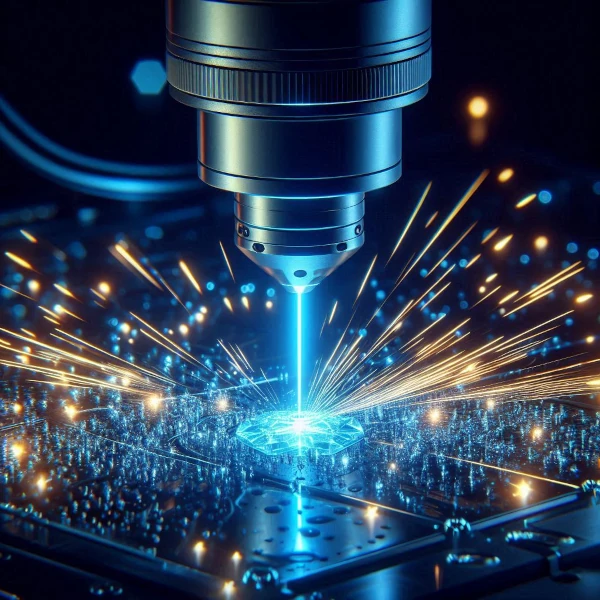
Image description: Representation of an ultra-powerful laser beam generated by a femtosecond laser. Image source: astronoo.com
The femtosecond laser is an optical technology that produces extremely short light pulses, on the order of a femtosecond (1 fs = 10-15 seconds). These pulses, despite their very short duration, can carry an enormous amount of energy to conduct high-precision experiments in fields such as material physics, medicine, and industrial manufacturing.
The principle behind the femtosecond laser is the generation of ultra-short pulses from a continuous laser beam. Techniques like chirped pulse amplification (CPA) are used to temporarily stretch a laser pulse (to avoid destroying it) and then compress it again, which dramatically increases its power. The main idea is that, despite the short duration of each pulse, the total energy delivered in this time window is extremely high.
Femtosecond lasers can generate extremely high light intensities. For example, a pulse of a few femtoseconds can release between 1 and 10 joules per pulse, concentrated in a fraction of a second. In other words, a femtosecond laser delivering 1 joule per pulse in a fraction of a second can have a local effect as intense as a small explosion, but at a much smaller scale and over a much shorter period.
The peak power (or maximum instantaneous power) of femtosecond lasers is also extremely high. Peak power can reach impressive values on the order of several terawatts (TW) (1 TW = 1012 watts) for pulses lasting only a few femtoseconds. For example, a laser delivering a 1 joule pulse over 100 femtoseconds will have a peak power of 10 TW.
Power is defined as the rate of energy transfer per unit of time: $$P = \frac{E}{t}$$
Therefore, high power can be achieved by increasing E (the total energy) or reducing t (the time over which the energy is released). For very short times, even moderate energy can correspond to very high power.
Example for a femtosecond laser delivering an energy of \( 1 \, \text{mJ} \) (\( 1 \times 10^{-3} \, \text{J} \)) in a pulse of \( 1 \times 10^{-15} \, \text{s} \). The instantaneous power is given by:
$$P = \frac{E}{t} = \frac{1 \times 10^{-3}}{1 \times 10^{-15}} = 10^{12} \, \text{W} \, (1 \, \text{TW})$$
This is equivalent to the total power of a nuclear power plant, but released over an extremely short time.
When a femtosecond pulse strikes a material, it can induce extreme effects, such as modifying the structure of materials on an atomic scale, generating high-temperature plasmas, or studying ultra-fast chemical reactions. These phenomena are exploited in fields as diverse as high-resolution microscopy, eye surgery, and precision machining.